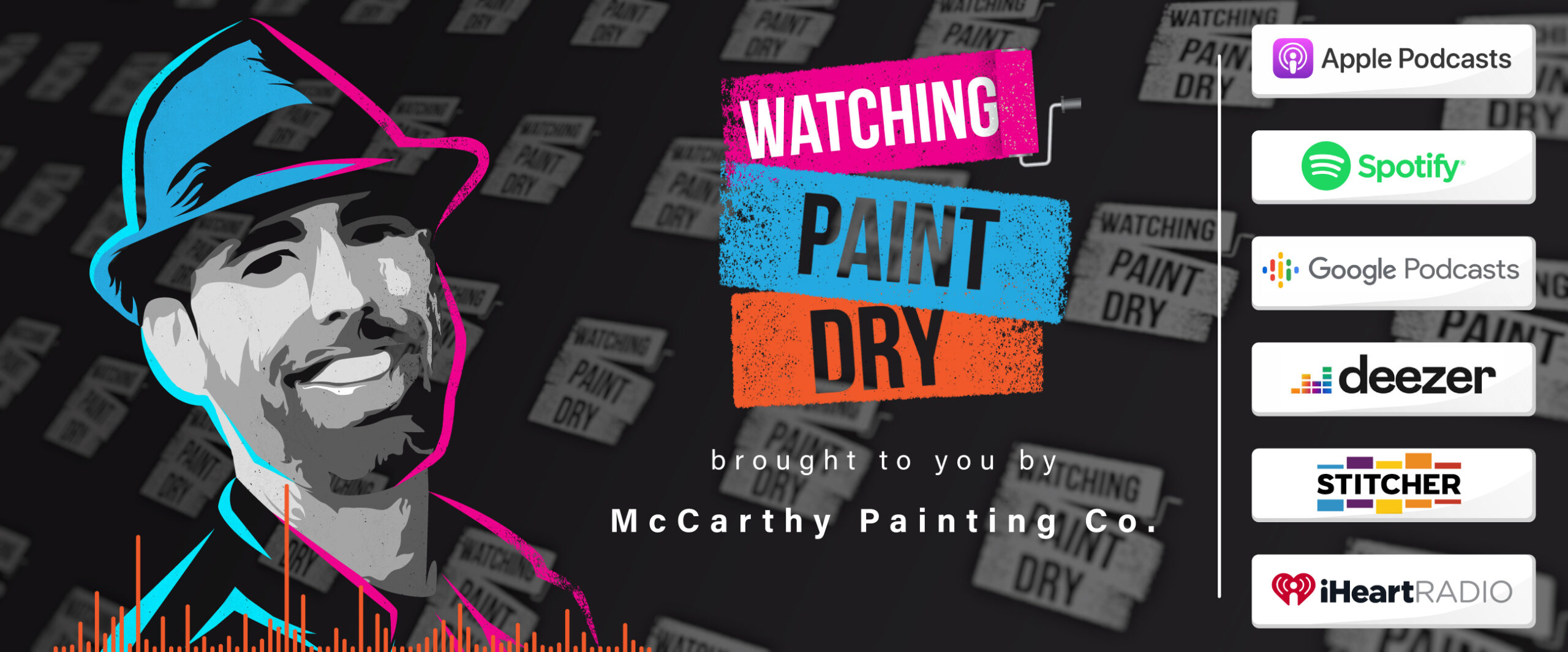John Corcoran 16:36
Right, right. Or people haven’t had to think through before. That’s really what this is about, you know, how do we, how do we adapt to this new reality? Hopefully, it will be temporary, hopefully, in a year’s time, year and a half time or whatever they’re talking about there being a vaccine, but in the, in the meantime, we’re gonna have to retrofit things.
Greg Owens 16:57
Like how do you have coffee, right?
John Corcoran 16:59
Coffee! That’s a great one.
Greg Owens 17:00
Yeah, yeah, I mean what we’re seeing is like they have to, they, they’re not sure how to have coffee right now right they’re sending you out you can go out to pizza and order your coffee and come back with it because you can’t have a shared coffee pod. Right? How you’re going to keep that sanitized and how you’re going to keep it and the same thing with the cafeteria spaces. So many companies have gone to like a cafeteria style space where they serve food and and you can line up and you can get your food and your your put it onto your tray you know kind of like when you were back in school but much much for me and you know, organic good food and that’s at the moment what they’re doing. What I’ve seen is like companies are doing is I’m having like a deli, bringing in sandwiches, right all individually wrapped, and then maybe a bunch of coffees for their employees and that kind of thing. You know, so that nobody has to leave the building because again with the elevators that are challenging to get into now, right, oh, they’re still providing food. But they’re outsourcing it and it’s changed a lot. And they’re still and they’re looking at the space and they’re trying to figure out, right, they’re trying to figure out what’s the next step. So what does this look like going forward and everything’s up in the air? All these things are for consideration. What about, you’ve been asked about anti microbial paint? What is that? And if that is a solution that can help companies antimicrobial paints, it’s a mouthful of a word. And there is in there, you know, as these things develop, so there are products that are out there that are labeled anti microbial. And, you know, I’ve been doing this for a very long time. We’re more than a painting contractor. We’re more than 30 years old. And what’s really, and this happens in almost every industry is marketing before reality. Right. So there’s a lot of hype and a lot of marketing. And then you actually when you dig deeper, it doesn’t really hold up. Now there are some promising paints out there that I’ve seen. Some of them are really expensive, that are used in laboratories and pharmaceutical companies and that kind of thing. But that higher level of epoxy, two part epoxy paints, and things like that. That’s just at the moment not going to be beneficial to a hallway inside a skyscraper or something like that. But I have that the paint companies are looking at, these entrepreneurial companies, are looking at this. So I would expect really soon to see a lot better sort of products out there, you know, and then there’s a consideration that I always have to is that like, when they rushed some of these things to market and they did this a few years ago, they had a paint that killed bugs, right? But really, do you really want to paint that kill bugs, and do you want to be a person applying it? And then how good is that for the environment? Right. And so I think, I think there’s those kinds of considerations that have to take place, you know, right. But it could be really, it could be really useful for high touch areas, right? Where you have a lot of people touching something else that they’re considering too is like, right now you have to go into an elevator and press a button, right? And so, there’s a whole term for this, and I forgot the term, but it’s how do you make all that stuff? So it’s, you know, it just happens it autonomously happens, right? Like, and there’s Same thing with doors, right? Like, rather than us touch the door to open it, how do we how do they install automatic door openers, you know, to create sort of a flow that where there’s no high touch points—
John Corcoran 20:50
So some kind of voice activation, perhaps?
Greg Owens 20:53
Voice or just even walk up and it opens. I know some facilities already had this like the newer sort of buildings in San Francisco where you walk in, you might have experienced this where you tell the lobby guard What floor you’re going to. And then you walk onto the elevator and there are no buttons. It’s kind of like a weird experience, because now you’re in like this tin can and the doors closed, and you’re like, how do I get out if I need to get out? Cuz there’s no buttons in there. Right? I mean, it takes you to the floor that you told the guard in the lobby that you were going to.
John Corcoran 21:26
Right, right, right, or, you know, maybe the lights turned on the motion activated lights, like
Greg Owens 21:31
Like, it’s been around for a while, and a lot of buildings. I mean, they think it was a requirement for environmental reasons and energy savings and that kind of stuff. So that was it. Yeah. So that that’s been around for a lot, but I bet you in a lot of the old buildings, or—
John Corcoran 21:45
You make a great point. I mean, companies do need to think about, is it a high-touch area or not a high-tech area? And do you really need this antimicrobial paint in a non-high-touch area, so maybe it’s just prioritizing what areas might need that You know, paint and it does come on the market.
Greg Owens 22:02
Yeah, I’ve seen some facilities managers are sort of laying out their floor plans and looking at the whole floor plan and like, okay, how do we how do we make the best use of this floor space now, given what we know right now, and things might change, but you know, as we bring back the workforce, you know, okay, all these shared spaces and maybe the couches and things like that we need to put them away and, and have more singular sort of desk spaces that people can work from and that kind of thing and keep the social distancing. Because, you know, I think you’ve seen this too. It’s really hard for people to wear the masks all day long, right? Especially when they feel like there’s nobody around them right now. Like I’m in my office right now. And there’s nobody here so there’s no reason to wear a mask you know, right at this moment. Right. And so you Yeah, I think I think that’s like, like all those kinds of things are being considered like how to best use our space that we have, even if we’re just bringing 30% of the workforce back right now.
John Corcoran 23:06
Right, right. Yeah. So I know we’re running short on time. But last question to ask you about, I know that you said that some companies are even having doctors or epidemiologists that are either on site or on retainer. So they have to think about that, you know, a space for an on site doctor or space for an on site epidemiologist, or what for when they do come in, so that they can be there. So talk a little about that concern also.
Greg Owens 23:34
Well, that was an interesting thing. Like some of the companies were just really ahead, right. And they really have their act together and thought through like, okay, we need to have her on retainer, an epidemiologist, right? So that they run past that person. You know, like, hey, this is what we’re thinking, how does that jive with the science that we know about how this virus spreads? Right? And then the doctor has been more like around so that employees have somebody to go to within their organization, it’s quicker and easier so that they can have a conversation with and it turns out there was a lot of like, a need for psychological sort of help, you know, because of the stress of this new world paradigm that we’re all living in right now. Yeah. Like highly, highly considered, right. Yeah. I think you know, when it comes to the HVAC, I know, the epidemiologist, they were looking at UVC lighting inside the HVAC system, right. And that turned out to be really expensive. And then they found other ways of purifying the air as it comes into the building, so that you know, and so they’re not having to recirculate the air. So that’s something that they were considering to and looking at, what’s the best quickest, you know, way to sort of clean that air and so that, you know, things aren’t spreading because it’s a big concern right when you’re in these buildings and we circulate air. You don’t want that to happen anymore. You want to make sure that the air has been cleaned out.
John Corcoran 25:04
Right, right, man, there’s so many considerations that facilities managers are having to think about right now, Greg, this has been great to just share some of the things that you’re hearing, you know, you really have your ear to the ground in terms of talking to a lot of facilities managers and, and sharing what you’re hearing for others so that they can benefit and they can hear what their peers are doing. And other companies remind everyone where people can go to learn more about you and McCarthy Painting and to contact you if they have questions.
Greg Owens 25:31
Yeah, thank you, John. It’s always good to talk with you. And you can go to mccarthypainting.com and we’re in the San Francisco Bay area or you can send me an email to info@mccarthypainting.com, ask some questions, happy to share sort of what we’ve been learning and what we’ve been doing and you know, and if we’re just trying to learn as much as we can in these times, you know, in the podcast has been a great way to do that and be able to talk to facilities managers, and have these kinds of conversations so we have a better understanding of how we can be a better vendor and you know, just sort of like share these expertise really, to the to the different organizations that help support them. One of them being and we’re a member of it is, IFMA, International Facility Management Association, right. And it’s, it’s where they get to share these kinds of ideas. And it’s a wonderful organization. So if people really are looking at having a career as a facilities manager, or things like that, it’s a great place to start.
John Corcoran 26:36
Yeah, it’s such a critical time right now with things changing so rapidly. And with knowledge changing and standards and requirements changing. It’s great that you are sharing that knowledge here with everyone else. Well, Greg, thanks. Thanks so much.
Greg Owens 26:50
Yeah. Thank you.
Outro 27:00
Thanks for listening to the Watching Paint Dry Podcast. We’ll see you again next time and be sure to click subscribe to get future episodes.


